Down Under Enterprises grows, produces, exports, and markets traceable
and sustainable native Australian essential oils and botanicals grown on our farm, Buhlambar, and from across Australia offering essential oils and botanicals with unique functional and aromatic properties.
G’day mate,
Welcome to our May Update!
This month we bring you our all-time favorite “Tea Tree Oil”!
This month’s Update explores the MISCONCEPTIONS about Tea Tree Oil, one of the most used essential oils in the world. Surveys confirm consumers seek out products containing this amazing native Australian oil. But popularity does have its downsides – the increased presence of adulterated oil on the market being one. Misunderstandings and false information also exist which we explore in this issue.
Naturally complex substances (NCS), including Tea Tree Oil and other essential oils, are facing an existential threat with Europe’s recently approved “Green Deal”. If you haven’t heard about it yet, make sure to read the article. It’s a case of good intentions inadvertently leading to serious potential consequences.
This week is Reconciliation Week in Australia, a time to celebrate Aboriginal indigenous history and culture in Australia and foster reconciliation discussion and activities. We share with you the efforts Down Under is undertaking to support Reconciliation.
Enjoy the Update:
- Misconceptions of Tea Tree Oil
- NEW Tea Tree Application Guide
- The EU "Green Deal" and Essential Oils
- Get ATTIA COP Logo on Your Labels
- Australian Reconciliation Week
- Meet Glen - Our New Farm Manager
Thanks for reading.

Phil Prather
FEATURED PRODUCT
"MIS" + "kuhn" + "SEP" + "shuhn"
“a view or opinion that is incorrect based on faulty thinking or understanding”
Oxford Dictionary, 2023
Tea Tree Oil is one of the most widely used essential oils in the world. Consumers seek out Tea Tree Oil because they believe it works for them.
This is not a misconception.
A Kantar/Mintel research study of 1,962 consumers on their preferential natural ingredients found Tea Tree Oil is ranked the fourth most sought natural ingredient – and the highest essential oil (see graph). In this study, 24% of all respondents stated they specifically look for Tea Tree Oil as an ingredient in the products they purchase.
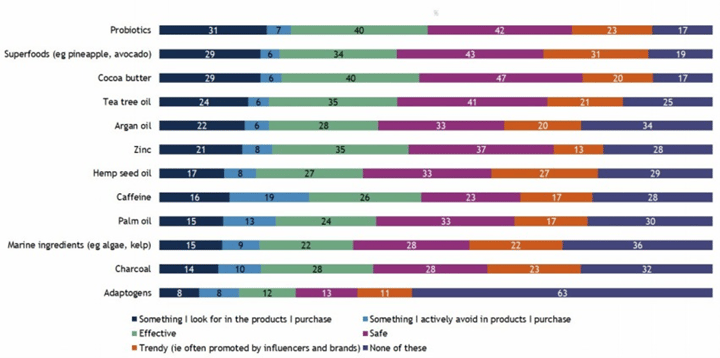
But there are some misconceptions about Tea Tree Oil which continue to pervade internet chat rooms, product reviews, and so-called medical advice websites.
The top misconceptions we see are:
In this article, we address each one of these topics in brief, and provide links to explore each topic in more detail, including published scientific references, to debunk these misconceptions.
MISCONCEPTION 1 - ENDOCRINE DISRUPTION
How the misconception started
Studies by Henley & Korach (2007), Diaz (2016), and Ramsey & Korach (2018) purported a causal link between Tea Tree Oil, Lavender Oil, and endocrine disruption in children, namely gynecomastia in boys and premature thelarche in girls. While these studies were refuted by many scientists through in vitro studies, without epidemiological evidence, the sensationalist headlines remained.
The evidence – Tea Tree Oil does not cause endocrine disruption
In 2021, Hawkins et al. published the results of a study of 556 children in the International Journal of Pediatrics and Adolescent Medicine, titled “Prevalence of Endocrine Disorders Among Children Exposed to Lavender Essential Oil and Tea Tree Essential Oils”. This study unequivocally confirms no association between Tea Tree Oil and Endocrine Disruption.
The authors stated:
"This study provides evidence that lavender essential oil and tea tree essential oil are safe ingredients in formulations for personal care products used on children.”
The authors concluded:
“The proposed links between these ingredients and endocrine disruption cannot be substantiated in epidemiological studies."
MISCONCEPTION 2 - SKIN DERMATITIS
How the misconception started
The perception that Tea Tree Oil is not good for people with eczema or experiencing other forms of contact dermatitis evolves from two different issues:
- Application of straight Tea Tree Oil to sensitive skin without a carrier oil
- Prevalence of adulterated Tea Tree Oil on the market – especially online shopping for “cheap” Tea Tree Oil
The evidence – Tea Tree Oil reduces the incidence and severity of eczema
- Researchers at the University of Lund in Sweden, lead by Dr Joanna Wallengren, published a study demonstrating Tea Tree Oil offers the best reduction of histamine-induced contact dermatitis, nearly doubling the reduction of a common steroid cream used by sufferers of eczema. Notably, these results were achieved once the Tea Tree Oil concentration was reduced from 50% to 20%.
The authors stated:
“Tea tree oil reduced allergic contact dermatitis by 40.5% (p = 0.002), zinc oxide by 17.4% (p = 0.04) and clobetason butyrate by 23.5% (p = 0.01).”
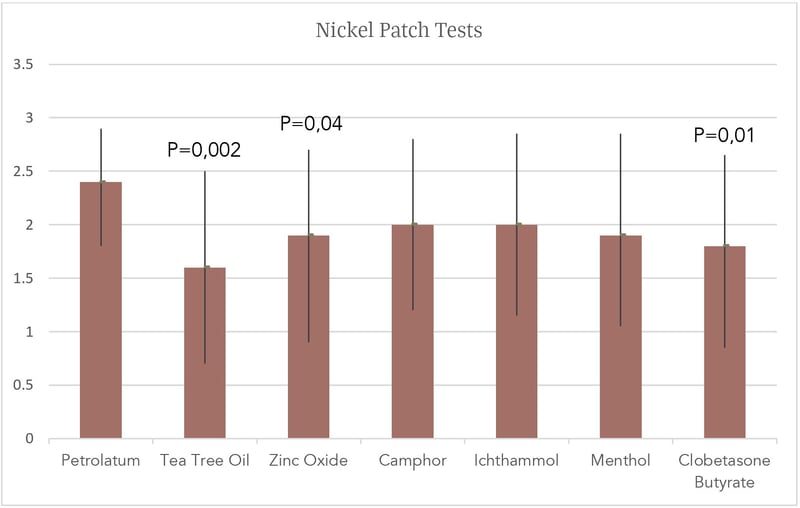
2. Adulterated/“FAKE” Tea Tree Oil
Unfortunately, adulterated Tea Tree Oil is creating the misperception that Tea Tree Oil can burn skin. With the popularity of Tea Tree Oil, adulteration is more and more common than ever before. The Australian Tea Tree Industry Association, ATTIA, has conducted a worldwide retail sampling of 429 bottles labeled as “Pure Tea Tree Oil” since 2012. Summarizing the data in 2018, over 40% of the retail samples tested were found to be adulterated. Due to ATTIA’s work, the incidence of adulteration has reduced considerably in recent years. But the issue still exists - especially online marketplaces.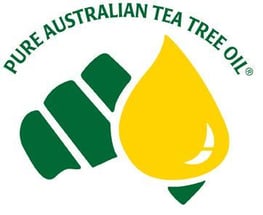
To help counter adulteration and give consumers a means to identify pure Tea Tree Oil, ATTIA has recently registered a QUALITY LOGO across the globe. Manufacturers can apply to use this logo to communicate to their customers the purity and authenticity of the Tea Tree Oil they use.
If you are interested to use this logo on your products, read our blog “Traceability” to learn more Down Under Enterprises practices and about ATTIA’s Code of Practice quality logo.
MISCONCEPTION 3 - SKIN SENSITIZER
How the misconception started
The most common skin allergy test for “Tea Tree Oil” is produced by a Swedish company, Chemotechnique Diagnostics. This company consistently – and intentionally – oxidizes their Tea Tree Oil. When questioned by ATTIA on their use of oxidized Tea Tree Oil, the company representative responded that they needed to oxidize the Tea Tree Oil to get a positive test result. Recently, the company has started labelling their test kits as “Oxidized”, but the studies have been published, and the perception damage has been done.
The evidence – Tea Tree Oil yields 0% allergic reactions at <10% concentration
Australian Tea Tree Oil is well tolerated by most individuals – even at 100% strength. The Australian government commissioned an extensive study in 1999 to investigate the human rate of skin sensitivity to Tea Tree Oil. In spite of this study population being highly sensitized, with 50% of the cohort responding positively to dust-mite and rye grass skin prick (typically 30% prevalence), only 4 of the 219 study participants (1.8%) demonstrated any sensitivity to Tea Tree Oil at 100% concentration.
No allergic reactions were observed at Tea Tree Oil concentrations <10%.
To learn more, read our blog "Oxidized Tea Tree Oil for Allergy Test Kits".

MISCONCEPTION 4 - LACK OF EFFICACY
How the misconception started
As for any “active”, Tea Tree Oil needs to be present in a formulation in a functional concentration. Retail shelves are replete with products with “label claims” of Tea Tree Oil. But if a consumer buys a product expecting a certain result and doesn’t obtain that benefit, then they can become disenfranchised. This may happen with Tea Tree Oil. An internal survey of manufacturers on their perceptions of Tea Tree Oil identified a disbelief that Tea Tree Oil could possibly offer effective natural antibacterial, antiviral, antifungal, and anti-inflammatory properties.
The evidence – Tea Tree Oil is one of the most researched of all essential oils
A recent PubMed search identifies over 1000 peer-reviewed papers documenting the functionality of Australian Tea Tree Oil. One of the highest ranked papers in PubMed is a seminal study by Carson et al. in Journal of Clinical Microbiology Reviews (2006) reporting the antimicrobial efficacy of Tea Tree Oil, referencing Minimum Inhibitory Concentrations (MIC) and Minimum Bactericidal Concentrations (MBC).
The chart below demonstrates a relatively low concentration of 1% offers MIC and MBC functionality across a wide range of organisms.
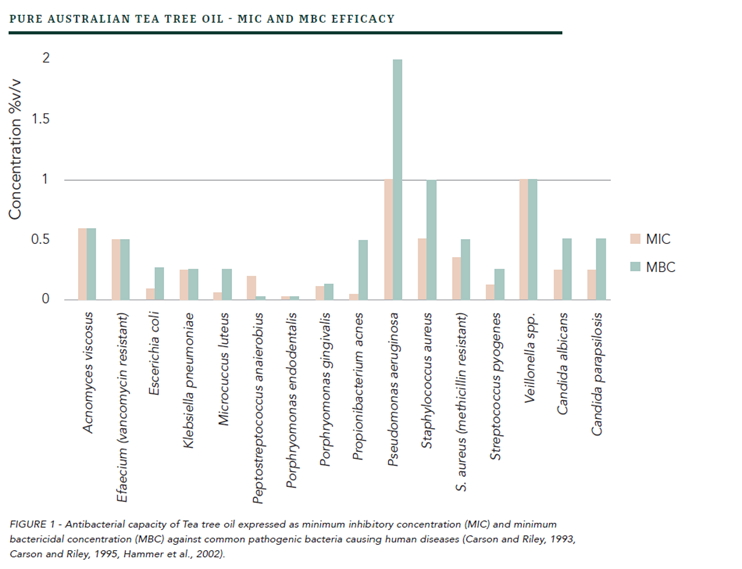
To learn more, download our Tea Tree White Paper for Medicinal Applicaitons.
THE EVIDENCE
Australian Tea Tree Oil offers formulators many functional benefits. Hundreds of peer-reviewed, published papers document Australian Tea Tree Oil's antiviral, anti-inflammatory, antifungal and antibacterial properties. At Down Under, we continue to support the Australian Tea Tree Industry Association (www.attia.org.au) and the advancement of the science behind this natural wonder.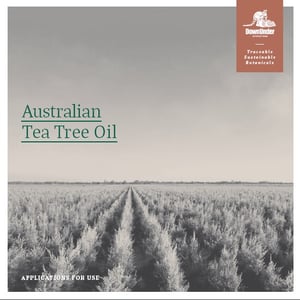 Download our new Applications Guide to learn more about the range of applications suitable for Tea Tree Oil, and access White Papers which detail scientific published data for each application.
Download our new Applications Guide to learn more about the range of applications suitable for Tea Tree Oil, and access White Papers which detail scientific published data for each application.

TRACEABILITY
A globally recognized logo for Pure Australian Tea Tree Oil which conveys “authenticity”, “purity”, and “safety”.
That is the goal for ATTIA, the Australian Tea Tree Industry Association, with the introduction of its globally registered trademark.
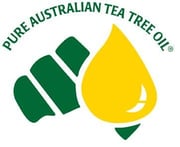
This logo is now appearing on consumer brand labelling as more and more manufacturers sign up to demonstrate to their consumers that they are only using Pure Australian Tea Tree Oil, produced under the ATTIA Code of Practice quality control program – the only essential oil quality control program in the world.
To learn more about the ATTIA Code of Practice Quality System, click HERE.
To learn more about how your company can use the ATTIA registered logo, click HERE.

FARM UPDATES
Reconciliation Tree Growing
Those of you who regularly read our Newsletters may recall that we kicked off our Indigenous (Aboriginal and Torres Straight Islander) Reconciliation Action Plan in December last year at our farm with a discussion with local Aboriginal elder Aunty Gwen.
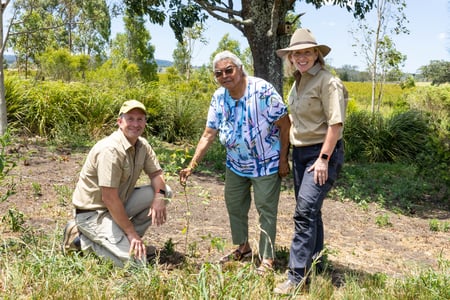 |
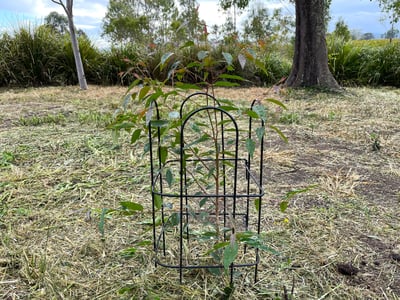 |
| Reconciliation Ceremonial Tree Planted with local older Aunty Gwen in December 2022 | Reconciliation Ceremonial Tree in May 2023, 6 months after planting. |
Following this presentation and interactive discussion, we planted a ceremonial Eucalyptus tree to commemorate this event. The tree, an Ironbark Eucalyptus, is of special significance to the local Bundjalung people.
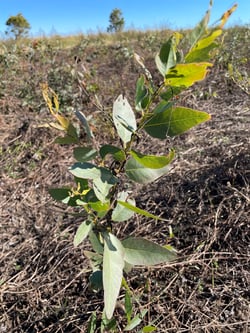
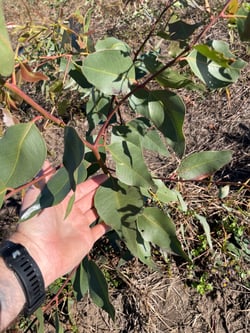
This same tree species is what we produce our Lemon Scented Iron Bark oil from, with plantings of these trees (for oil production) in December 2022.
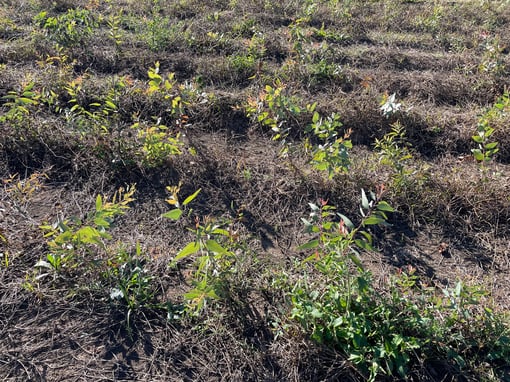
These trees are growing well and we expect the first harvest and Lemon Scented Iron Bark Eucalyptus Oil distillation from these trees by the end of 2023.

SUSTAINABILITY
National Reconciliation Week
This week is Reconciliation Week in Australia, a time to celebrate Aboriginal indigenous history and culture in Australia and foster reconciliation discussion and activities.
As a producer of native Australian plants and extracts, we have learned from Aboriginal knowledge of the functional properties of our plants. A deep connection with the land has evolved, which led us to initiate our Reconciliation journey late last year.
Our Reconciliation Action Plan (RAP) and activities will take shape over the next six months.
Subscribe to our newsletter to follow our RAP journey.
IN THE NEWS
The EU Green Deal and What It Means for the Essential Oil Industry
The European Green Deal is the European Union’s initiative to become a sustainable climate neutral and circular economy by 2050. One of the pillars of the Green Deal is the Chemicals Strategy for Sustainability (CSS). The CSS aims to better protect human health and the environment as part of an ambitious approach to tackle pollution from all sources and move towards a toxic-free environment. In other words, the CSS aims to protect EU citizens and environment from the most hazardous chemicals and to boost innovation by promoting the use of safer and more sustainable chemicals.
The EU has already implemented a comprehensive and protective regulatory framework to address the production and use of chemical substances, known as REACH (Registration, Evaluation, Authorisation and Restriction of Chemicals, 2006) and the Classification, Labelling and Packaging (CLP) Regulation (2008). CLP is the EU’s version of the Globally Harmonised System (GHS) for classification, labelling, and packaging of chemical substances and mixtures.
The new regulations and directives of the Green Deal and the CSS will involve revision of both the REACH and CLP Regulations, which may create unintended but potentially catastrophic consequences for the production, trade, and use of Naturally Complex Substances (NCS), a grouping of natural compounds such as essential oils (EO), natural plant extracts such as concretes, absolutes, and oleoresins.
While the ultimate goals of the new regulations and directives are well-intended and generally supported by various industry Associations, full implementation of the CSS carries at least four immediate and serious threats for the EO and NCS sector [5]:
1. Regulation of EOs would be based on a HAZARD determination (i.e. not RISK) of individual constituents as opposed to an evaluation of the toxicology of the substance as a whole
2. The creation of five new hazard classes within the CLP may lead to a ban on many EOs
3. Replacement of current risk-based safety assessments to hazard-based assessments
4. Increase in REACH dossier requirements, especially for small volume materials, will cause extreme hardship to SMEs (small and medium-sized enterprises).
Make sure to read future Down Under Updates to keep abreast of this issue.

EMPLOYEE'S PROFILE
Meet our new Farm Manager, Glen

We are thrilled to introduce Glen as part of the Down Under team.
Glen’s extensive research and development work, and his own experience as a farmer made him a natural fit for our team. His experience as the agronomist for a large certified organic soy milk producer in Australia aligns well with our own farm aspirations. While we already operate to a Regenerative Farming model, Glen has great ideas for further improvements. We look forward to seeing the results and sharing them with you.
Welcome Glen!
Our story
Down Under Enterprises grows, produces, exports, and markets traceable
and sustainable native Australian essential oils and botanicals grown on our farm, Buhlambar, and from small growers across Australia producing unique essential oils and botanicals from plants native to Australia.


